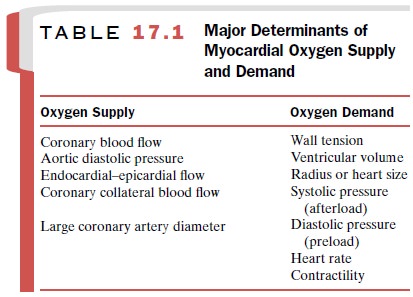Chapter: Modern Pharmacology with Clinical Applications: Antianginal Drugs
Antianginal Drugs
Antianginal Drugs
Angina pectoris is a clinical
manifestation that re-sults from coronary atherosclerotic heart disease. An
acute anginal attack (secondary angina) is thought to occur because of an
imbalance between myocardial oxygen supply and demand owing to the inability of
coronary blood flow to increase in proportion to in-creases in myocardial
oxygen requirements. This is gen-erally the result of severe coronary artery
athero-sclerosis. Angina pectoris (variant, primary angina) may also occur as a
result of vasospasm of large epicardial coronary vessels or one of their major
branches. In ad-dition, angina in certain patients may result from a
com-bination of coronary vasoconstriction, platelet aggrega-tion, plaque
rupture, and an increase in myocardial oxygen demand (crescendo or unstable
angina).
Antianginal drugs may relieve
attacks of acute myo-cardial ischemia by increasing myocardial oxygen sup-ply
or by decreasing myocardial oxygen demand or both. Three groups of
pharmacological agents have been shown to be effective in reducing the
frequency, severity, or both of primary or secondary angina. These agents
include the nitrates, β-adrenoceptor
antagonists, and calcium entry blockers. To understand the benefi-cial actions
of these agents, it is important to be familiar with the major factors
regulating the balance between myocardial oxygen supply and demand. These
factors are summarized in Table 17.1.

Related Topics